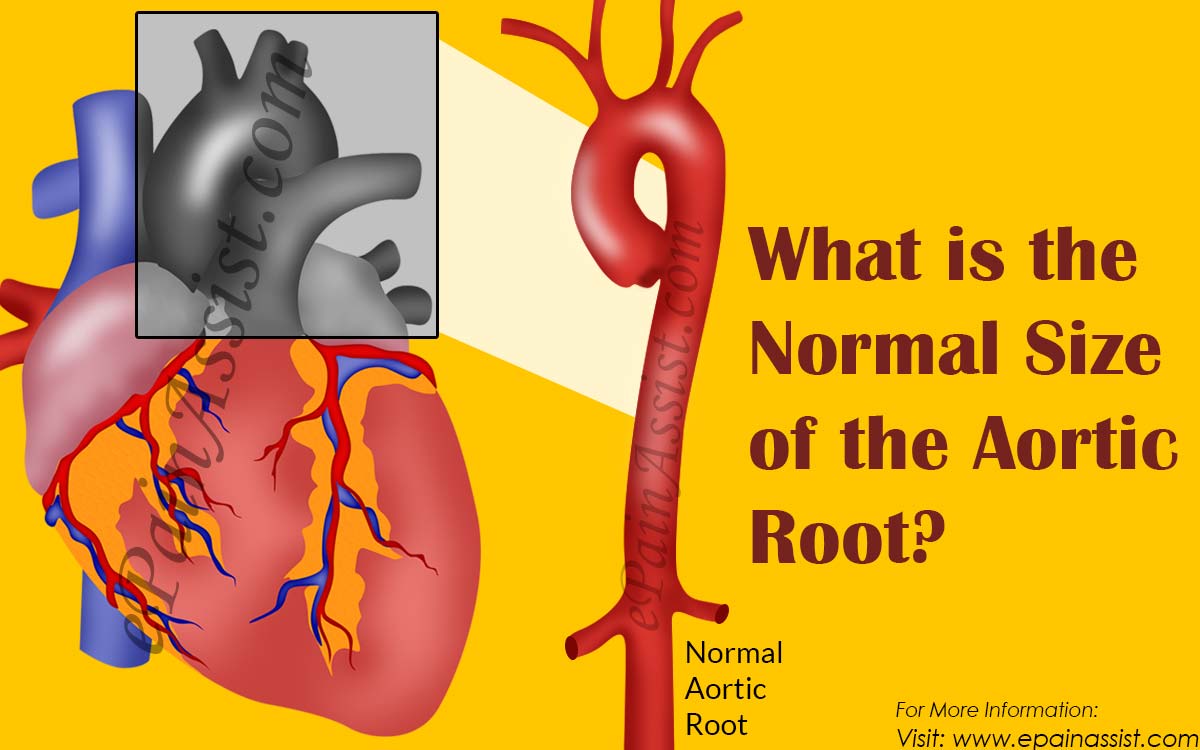The root of the aorta branches out from the heart. It sets the foundation for the aorta that is the longest blood vessel in the body. The aorta helps in supplying the blood pumped by the heart to different sections of the body through ascending and descending aorta. Both the ascending and descending aorta consist of arteries that supply the blood to various organs as well as particular regions of the body.

What is the Normal Size of the Aortic Root?
The standard size of the aortic root is between 29 and 45 millimeters. Any change in the value will pose trouble for any individual because the contraction and expansion make it difficult for the blood to flow smoothly through the aorta. Additionally, the excessive buildup of pressure of the blood near the heart causes a heart stroke.
Causes for Change In The Size Of The Aortic Root
The following are the causes of enlargement of aortic root:
Atherosclerosis – Increase in cholesterol and high blood pressure levels buildup plaque inside the walls of the aortic roots, making it difficult for the blood to flow smoothly. Additionally, the accumulation reduces the flexibility of the aorta and results in the development of bulge or an aneurysm over a period.
Genetic Disorder – One of the critical genetic disorder is the Marfan syndrome. Many people have it right from birth. Marfan syndrome is a condition that causes disturbance to the connecting tissues. As the connecting tissues face a problem, the wall of the aorta becomes weak. The weakness results in an aneurysm and enlarges at the rate of 10% per annum.
Other Health Conditions – Giant cell arteritis is an inflammatory condition that possesses the ability to increase the size of the aortic root.
Problem With Aortic Valve – People diagnosed with the bicuspid aortic valve face a situation of change in the dimensional of the aortic root. It is because the valve has only two cusps rather than three.
Injuries – Motor vehicle accidents are responsible for changes in the dimensional of the aortic root value.
Symptoms
Identifying the change in the value of the aortic root will be difficult for a regular individual. As there is a gradual increase in the value, people experience the symptoms over a period and in many cases only after a rupture. The growth or change in the value occurs at the rate of 10% per annum depending upon the lifestyle of the individual. The following symptoms will be helpful in recognizing the presence in the early stages:
- Inflammation
- Numbness
- Back pain
- Cough
- Shortness of breath
- Vomiting
- Blurred vision.
Seeking Medical Assistance
Reaching to a doctor will be helpful in several situations. With the symptoms mentioned above in mind, it will be quick and easy to approach a doctor and seek the assistance. The consultant will perform a few tests to identify the changes to the value of the aortic root.
The diagnosis procedure includes the use of x-ray, echocardiography, angiography, CT scan, and MRI scan. The results obtained with the help of these tests will be helpful in locating the change in the root of the aorta along with its structure. These results are useful in calculating the difference in the dimension. The following points are helpful in approaching a doctor:
- A sharp pain that appears on the back and heads downward
- Severe pain in chest, jaw, neck, and arms
- Heavy breathing.
- Mayo Clinic – Aortic Aneurysm: https://www.mayoclinic.org/diseases-conditions/aortic-aneurysm/symptoms-causes/syc-20369472
- Cleveland Clinic – Aortic Aneurysm: https://my.clevelandclinic.org/health/diseases/17657-aortic-aneurysm
- American Heart Association – Aortic Aneurysm: https://www.heart.org/en/health-topics/aortic-aneurysm
